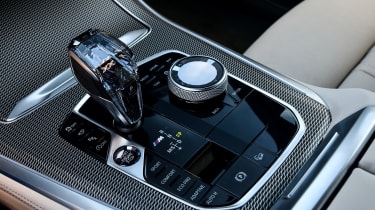BMW X5 review - how does it compare to the Porsche Cayenne? - Engine and gearbox
BMW’s original SUV is still its best, still handling like a big 5-series. It’s just a shame it means so much less today…
Engine and gearbox
Diesel engines may be about as popular as acid-wash jeans right about now, but when talking about a reasonably sensible two ton-plus SUV, petrols and hybrids still have a way to go before becoming the engine of choice. As a result, it’s not surprising to see that BMW has placed the biggest emphasis on its 30d and 50d power units, with a sole 40i petrol offered just for those who really don’t like acid-wash.
We drove both diesels on test, and found them to be impressively hushed and flexible throughout the rev range. The 30d’s 261bhp is impressive enough, but it’s the torque that keeps the hulking great body moving with plenty of vigour. It’s not exactly brisk, but it never feels underpowered, like it wouldn’t be hampered by a full load or trailer on the back. The engine’s calibration with the eight-speed ZF gearbox is also very impressive, mooching seamlessly between gears, without any of the hesitation that so often inhibits smooth and urgent progress in modern diesels.
It’s the M50d that steals all the headlines here though, with its quad-turbocharged 3-litre straight-six that produces those impressive power and torque figures. Layed out as two separate sequential twin-turbo systems, the journey of compressed air within the M50d’s engine bay is about as convoluted and confusing as Alice’s in Wonderland. At low rpm the first two small turbochargers quickly spool to spike the torque curve as quickly as possible. Then, at around 2000rpm, the larger turbos begin to spin, taking over from the smaller units right up to around 4500rpm, when the torque and power start to drop off their plateau.
Although it sounds massively convoluted, from inside it’s nearly intangible that so much is happening in front of you, rather you just feel a great surge of power. Unfortunately, BMW’s M Performance department has decided that a bit of M5-style sound generation is also required when set in Dynamic mode, masking the engine’s not entirely unpleasant sound by overlaying it with fake noise pumped in from somewhere around your right knee. This is not well executed, or indeed necessary, as from outside the X5 M50d sounds surprisingly edgy, in a big-diesel kind of way. What the M50d does is straddle the line between a sensible SUV engine option (if there ever was one) and the mad petrol-powered flagships that seem to make no sense outside of major British Petroleum shareholders.





